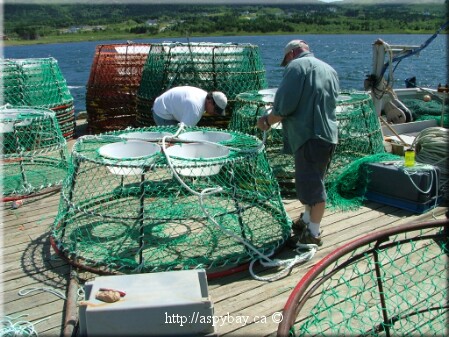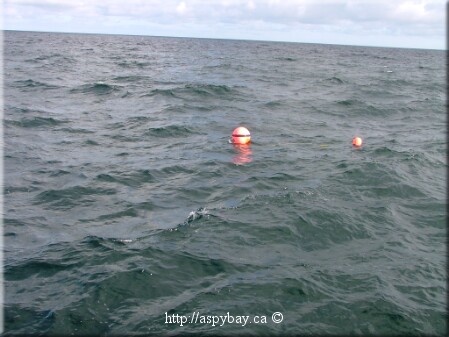|
The Gear
Our snow crab traps are 7 feet wide and 3 feet high. These dimensions are the maximum size we could use. The trap is covered in mesh except for four holes at the top. These holes are fited with a plastic cone where the crab enter the trap, and due to the slippery nature of plastic crab find it difficult to climb back through. If there was just an opening with no cones the crab would walk up the inside the the trap, across the top and out the hole. (The cones are only half cones. The top of the cone is cut off and it is inserted upside down into the top of the trap.)

The above photo shows a trap that is being prepared for the upcoming season. The rope and boey is yet to be attached to the trap. The four cones (also called buckets) are at the top of the trap.
There is a section of the mesh (about three feet long near the bottom of the trap) tied together with cotton rope. The cotton will degrade over time creating a hole for the crab to escape if the trap was lost. The cotton should last the fishing season but is check throughout the season.
The trap weighs upwards of 300 lbs. It sits on the bottom of the ocean in depths up to 100 fathoms (6 feet in a fathom) or 600 ft. All of the Wendy Helen's traps will have 120 fathoms of rope attached between the trap and a large buoy.

Above is the buoy on the surface of the ocean. A smaller buoy is attached to the larger one. The large buoy has enough buoyancy to keep its self and the rope afloat. The small boey provides a horizontal rope to gaff and pull aboard. The buoys are both air filled buoys.
Next "Getting Ready for the Season"
|

